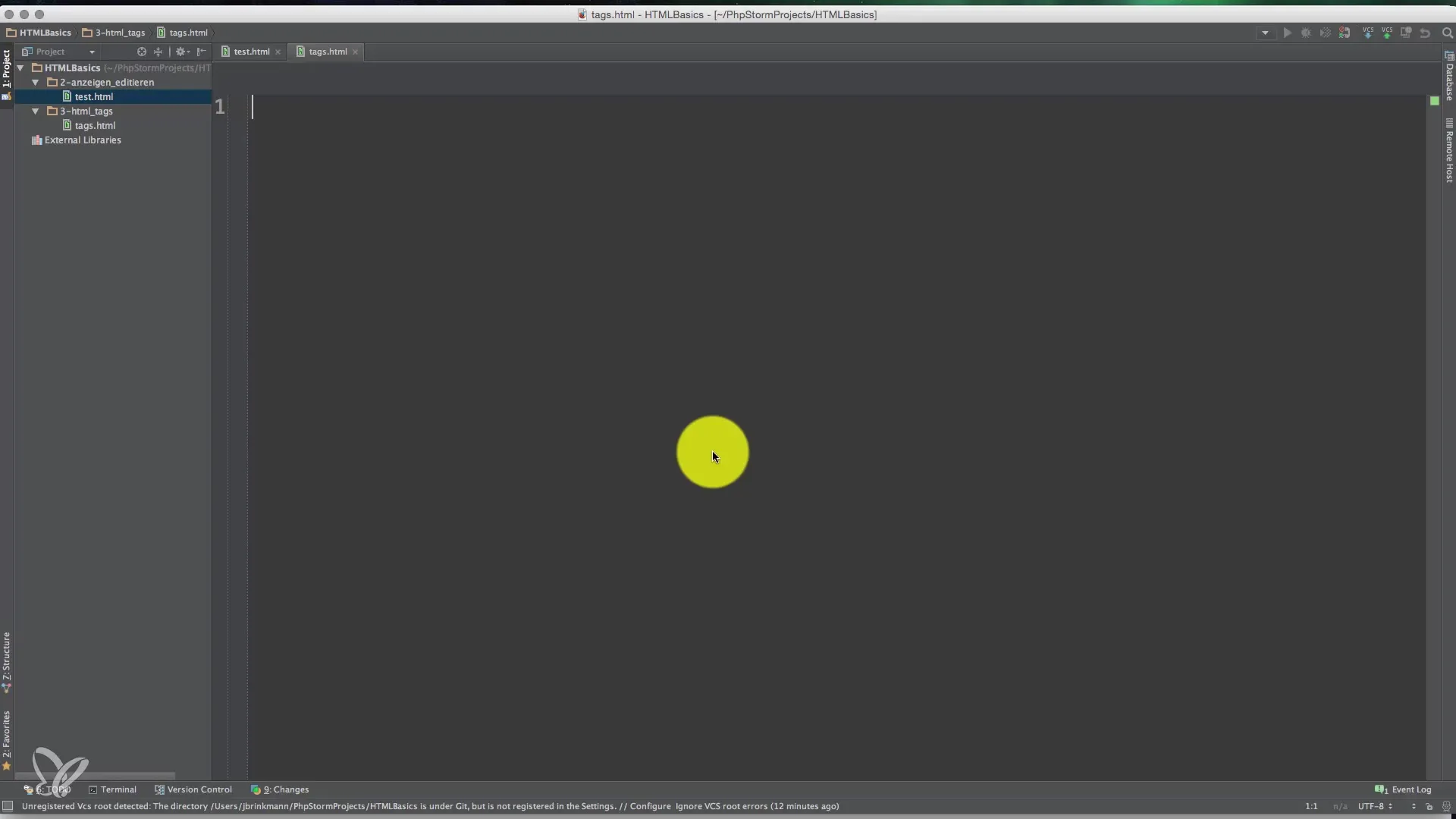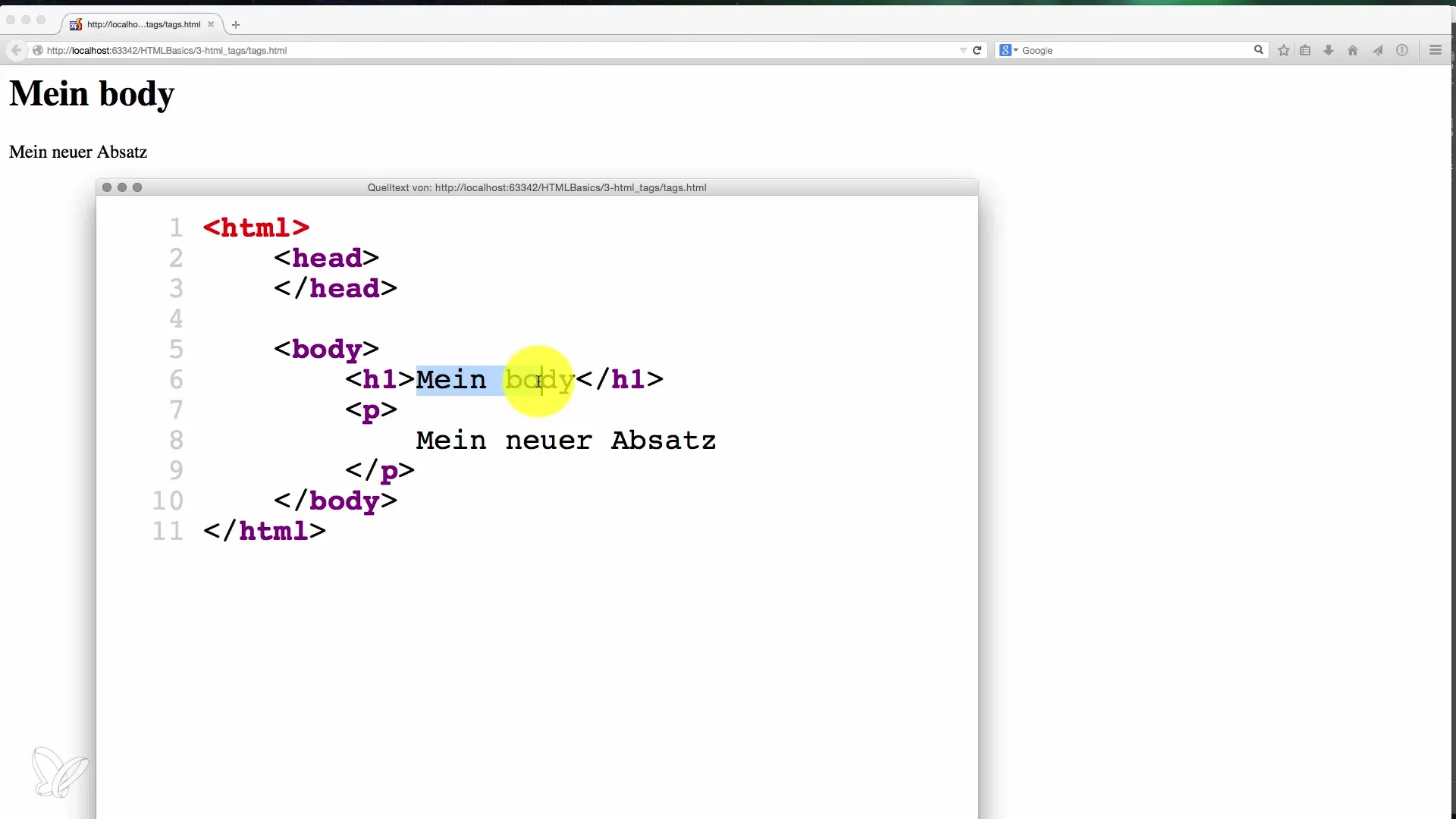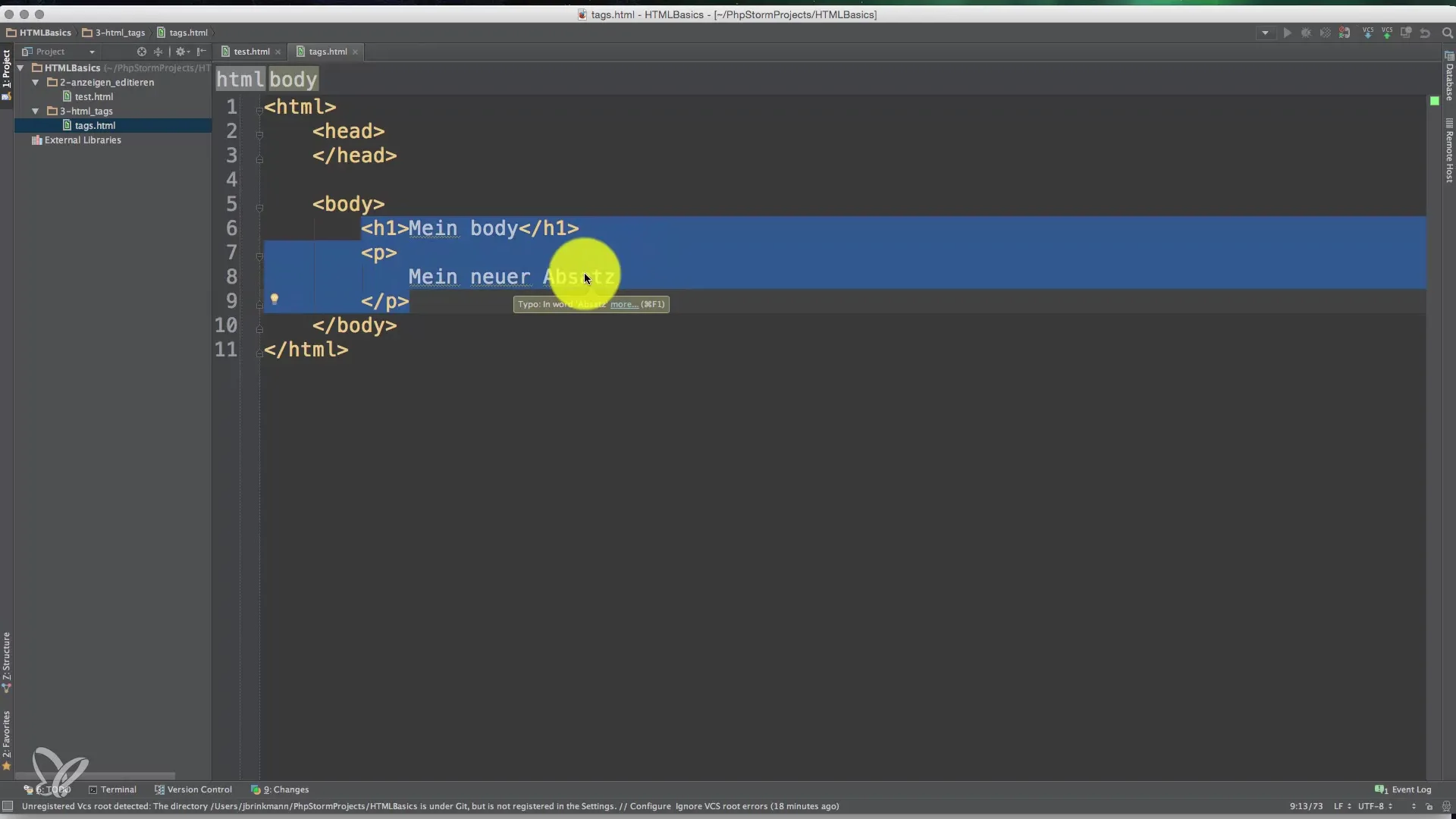HTML is the foundation of every website, and the structure of an HTML document is based on so-called tags. These tags allow you to organize content and define its structure. In this article, you will learn about the basic concepts and important tags of HTML that will help you develop your own web projects.
Step-by-Step Guide
1. Introduction to HTML Tags
Let's start with the basic concept of HTML tags. At its core, tags are the instructions that are interpreted by browsers to display the content accordingly. When creating an HTML document, it is important that you have the necessary software to write the code. A popular editor is the PHP Storm Editor, which provides syntax highlighting for your needs.

2. Understanding the Structure of an HTML Document
An HTML document is enclosed by the tag. This tag is the outermost tag and defines that it is an HTML document. Within this document, there are two main areas: the head area () and the body area (). The head area contains meta-information that is not displayed directly on the webpage, while the body area contains the visible content of your webpage.
3. The Head Area
In the head area, you can specify information such as titles, fonts, and links to other resources like CSS stylesheets or JavaScript files. This data is not visible to users but helps the browser display the page correctly. A typical example of the head area might look like this:
4. The Body Area
In the body area, you add your visible content. This is where the text, images, links, and other elements that the user can see go. It is important to note that the body area is also encapsulated in tags, specifically with the tag.
5. Getting to Know Important HTML Tags
One of the most fundamental HTML tags is the heading tag.
6. Recognizing HTML Tags

7. The Use of Tags in the Document
All content that lies between tag-related tags belongs to this tag.

8. The Structure of HTML Elements
It is crucial that you understand the structuring of your HTML document.
9. Checking the Source Code
When you open your HTML file in a browser, you can also check the source code to ensure that everything is implemented correctly. You can do this by right-clicking on the page and selecting "View Page Source."
10. Conclusion and Further Reading
Now that you have an overview of the basic tags, you can begin creating your own HTML documents and experimenting. Later tutorials will focus on structuring and organizing these tags to provide further knowledge.
Summary – Basics of HTML Tags: A Comprehensive Guide
In this guide, you have learned the basic elements of HTML tags. You now know how to structure HTML documents, which tags are important, and how to make the content visible. With this knowledge, you are ready to create your own websites.
Frequently Asked Questions
How do I get started with HTML?You can work with a text editor like Notepad or a specialized tool like PHP Storm to write HTML.
What is the difference between and?The -tag contains non-visible information, while the -tag houses the visible content of your webpage.
How many -tags should I use in a document?You should use only one -tag per document, as it represents the main heading.
What are closing tags?Closing tags are necessary to mark the end of a specific content area.
Can I use tags within other tags?Yes, nesting tags is a fundamental concept in HTML.


